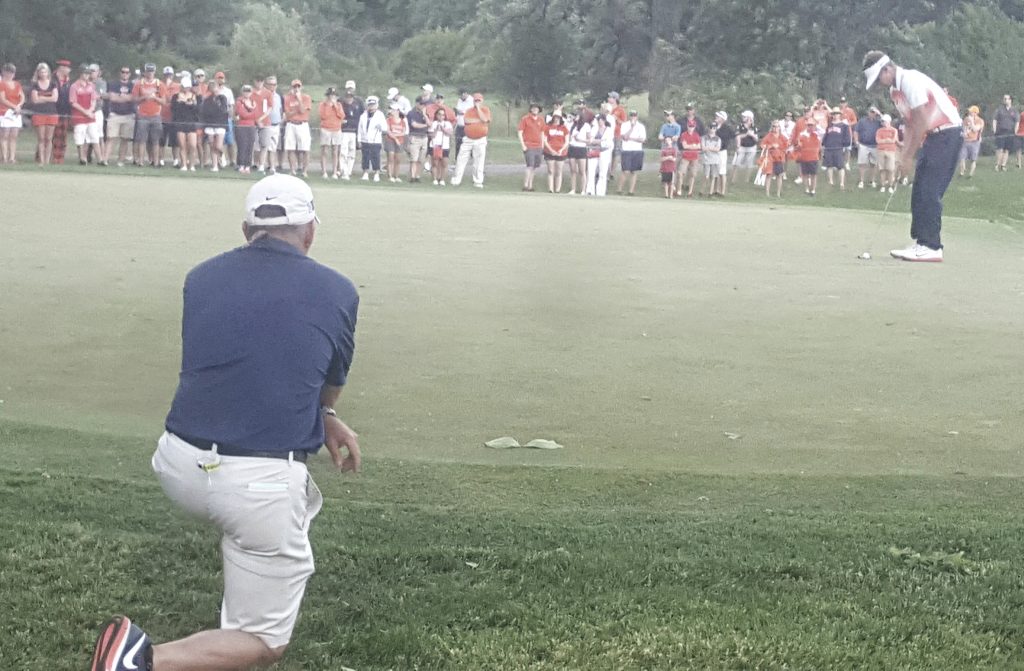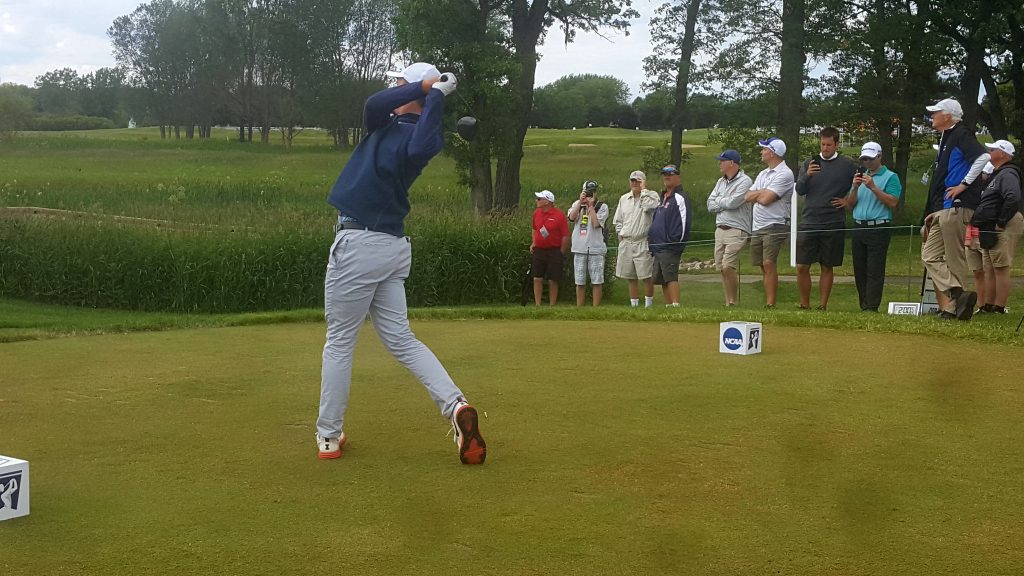Stephan Jaeger took care of business on Sunday, nursing a four-stroke lead at the start of the day to nab a two-stroke win in the $600,000 Rust-Oleum Championship. Now it’s on to the U.S. Open.
The Germany-born Jaeger survived a 36-hole U.S. Open sectional qualifier on Monday before claiming the $108,000 first prize in the Web.com Tour stop at Ivanhoe Club. That boosted Jaeger into the top spot on the Web.com Tour money list and assured him a place on the PGA Tour next season.
And still bigger things are looming, starting with next week’s U.S. Open at Wisconsin’s Erin Hills.
“I can’t wait to get started next week,’’ said Jaeger. “It will be a tough week with a lot of fast, firm greens – a lot like this week, honestly. This week was probably a good preparation for next week.’’
Most of the 156 qualifiers haven’t played 11-year old Erin Hills, but Jaeger has. He competed in the 2011 U.S. Amateur there but knows the course has undergone some major changes since then.
One thing that Jaeger knows he’ll have going is momentum. He won the BMW Charity Pro-Am on the Web.com Tour three weeks ago and showed some flashes in the following week’s event prior to earning his U.S. Open berth and winning at Ivanhoe.
“Momentum’s a factor, it really is, and I’m playing better than I ever have,’’ he said.
That’s saying something because last year Jaeger made major golf history when he became the first player to shoot 58 in a PGA sanctioned tournament. He did that at a Web.com Tour event in California, but Jim Furyk received much more notoriety when he matched the score in a subsequent PGA Tour stop.
Jaeger, 28, really had only one player to beat in Sunday’s breezy final round at Ivanhoe. Ted Potter Jr., a lefthanded golfer with a PGA Tour win on his resume, played one group in front of Jaeger and got within one shot after Jaeger made bogey at the par-5 ninth.
That was no big deal to either player. Potter didn’t realize he had closed the gap that much after starting four back and Jaeger answered quickly with a 10-foot birdie putt at the par-3 eleventh. He got his lead back to what it was at the start of the day, four strokes, when his chip at the par-5 14th hit the flagstick and left him with a tap-in for birdie.
Jaeger coasted in from there, a meaningless bogey on the final hole the only blemish on his tactical play over the last four holes.
Jaeger, Potter and nine other players who competed at Ivanhoe will head for Erin Hills on Monday to begin preparations for Thursday’s start of the year’s second major championship and the first ever in the state of Wisconsin.
“I’m sure it’ll be different at the Open, but it was nice to see wind and fast, firm greens here,’’ said Potter. “That should help me some next week.’’
Like Jaeger, Potter has played in a previous U.S. Open. He competed at Merion, in Philadelphia, is 2013. Jaeger was in the field at Chambers Bay, in Washington, in 2015.
After the Erin Hills Open is history both will resume play on the Web.com Tour, though their play at Ivanhoe likely assured both places on the PGA Tour next year. Potter won the Greenbrier Classic on the premier circuit in 2012 before declining play relegated him to Web.com events.
With two Web.com wins already this season, Jaeger wants to get one more before the years is out. Any three-time winner in the same year on the circuit get a “battlefield promotion,’’ meaning he automatically becomes a PGA Tour member and won’t have to wait until the following year to get into the bigger money tournaments.




